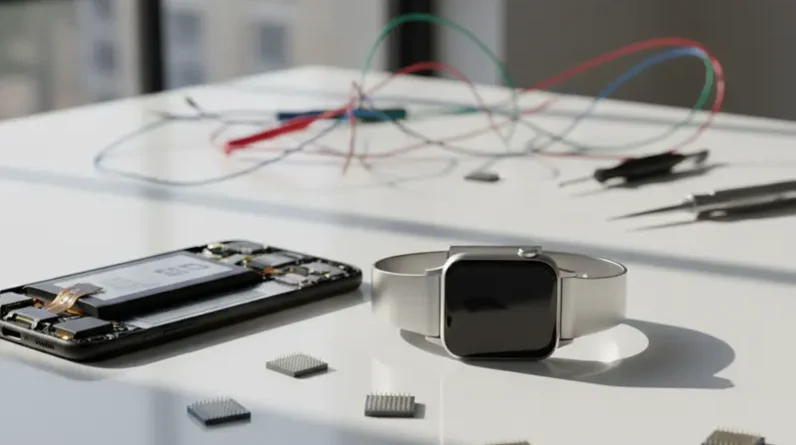
When we integrate smart home devices, we prioritize essential features like robust security and privacy protocols, local control and reliability, compatibility with various ecosystems, customization options, and energy efficiency benefits. We look for devices that minimize data collection, utilize encrypted connections, and offer two-factor authentication. Local operation and regular firmware updates guarantee uninterrupted service.
Compatibility with common protocols and voice assistants guarantees seamless integration. By focusing on these features, we can create a convenient, secure, and energy-efficient smart home. There’s more to explore in this complex landscape, and understanding these essentials is just the starting point for crafting our ideal smart home environment.
Privacy and Security Essentials
When integrating smart home devices into our living spaces, we must prioritize privacy and security to protect our personal data and prevent potential cyber threats. We look for devices that minimize data collection and comply with GDPR regulations to guarantee our privacy is respected. Encrypted connections, such as TLS 1.2, are a must to safeguard against cyber threats and vulnerabilities.
We also verify that the system provides robust security features, including regular firmware updates and two-factor authentication options. Additionally, we assess manufacturers’ privacy policies and data handling practices to guarantee transparency and user control over our personal data. By doing so, we can trust that our smart home devices are secure and our privacy is protected.
Local Control and Reliability Features
We prioritize local control and reliability features in our smart home devices to secure uninterrupted service and independence, even during internet outages. This approach guarantees our smart devices can function autonomously, providing an enhanced user experience with instant responses and no latency. Here are some key features we look for:
– Local operation minimizes reliance on external servers, ensuring continued functionality during internet outages
– Secure connections are maintained through local APIs that utilize TLS 1.2, minimizing potential vulnerabilities
– A standard 2-year warranty, extendable to 3 years, reflects a commitment to quality and durability, fostering reliability in smart home systems
– Robust local control features enable installers to confidently assure clients of uninterrupted service and independence
Compatibility and Interoperability Options
As we guarantee uninterrupted service and independence with local control and reliability features, we also prioritize compatibility and interoperability options to create a seamless smart home experience. We look for devices that support common communication protocols like Zigbee, Z-Wave, and Wi-Fi, ensuring effortless integration with various brands and platforms. Integration with major ecosystems like Google Home, Amazon Alexa, and Apple HomeKit is also essential for centralized control. We opt for devices with local programming APIs, enabling customization and compatibility with existing systems.
Compatibility with voice assistants allows for hands-free operation, while regular software updates from manufacturers maintain compatibility and improve performance. By considering these factors, we can create a harmonious and efficient smart home environment.
Customization and Specialty Hardware
Our pursuit of a tailored smart home experience leads us to prioritize customization and specialty hardware, empowering users to adapt solutions to their unique needs and preferences. This is where Shelly products shine, offering compatibility with various switches, timers, and custom scripting to create a bespoke smart home experience. To simplify installations and enhance reliability, we look for devices that eliminate hubs or adapters, streamlining the process.
– Compatibility with various switches, timers, and custom scripting for tailored experiences
– Elimination of hubs or adapters to reduce points of failure
– Standard Wi-Fi, Bluetooth, and Ethernet connections for simplified installations
– Flexibility in product offerings to adapt to diverse client needs
Energy Efficiency and Smart Home Benefits
By integrating smart home devices into our daily lives, we can access significant energy savings and create a more sustainable living space. Smart home products offer advanced energy management systems that monitor and optimize our energy usage patterns, allowing us to save up to 30% on our utility bills. With real-time power consumption data, we can make informed decisions to reduce energy waste.
Automated lighting solutions and smart appliances give us better control and scheduling, further enhancing overall energy efficiency. Furthermore, smart thermostats and energy management systems help us optimize our energy usage. By adopting these smart home technologies, we not only promote sustainability but also increase our property value, which can sell for 5-15% more than traditional homes.
Conclusion
As we integrate smart home devices into our daily lives, it’s vital to prioritize essential features that guarantee a seamless and secure experience. By considering privacy and security, local control, compatibility, customization, and energy efficiency, we can create a harmonious and high-functioning smart home ecosystem. For instance, the August Smart Lock, which integrates with top voice assistants and allows for customized access control, exemplifies how these features can come together to enhance our daily routines and provide unparalleled convenience.







